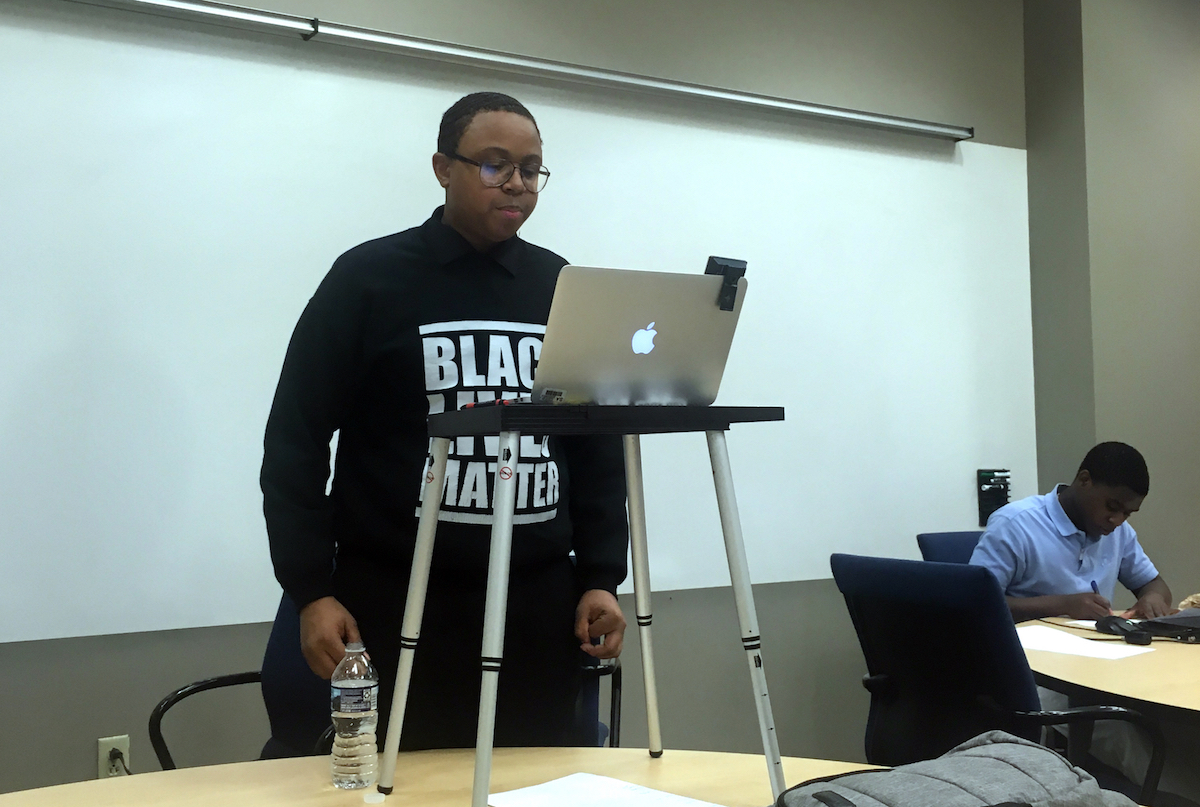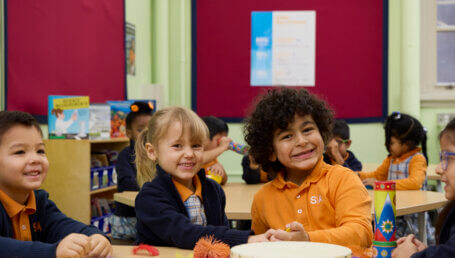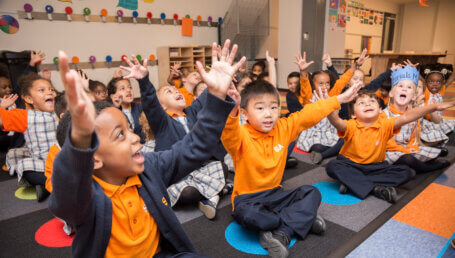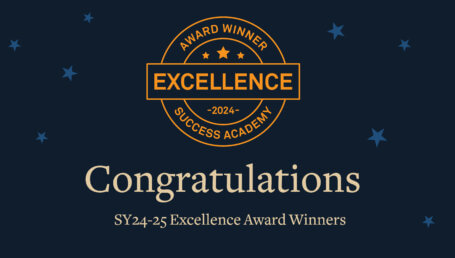
Three of SA HSLA’s most promising debaters flew to Emory University in Atlanta recently to compete in the Barkley Forum. Extremely selective, the Barkley Forum admits only two or three competitors from schools with strong speech and debate programs each year. This year, juniors Tajaih Robinson and Bintou Cisse, as well as sophomore Silma Bathily, made their way down South to test their prowess against the nation’s top debaters.
What, exactly, is Lincoln-Douglas debate? Named after the famous presidential debates of 1858, the Lincoln-Douglas format asks two debaters to make their case either for or against a resolution. The exercise requires extensive research, excellent public speaking skills, and a ton of confidence — which is why debate is such a challenging and productive activity for young people. Perhaps even more importantly, debate teaches scholars to advocate for themselves using logic, reason, and an arsenal of facts, ultimately arming them with the skills and knowledge to powerfully challenge the status quo.
Debate teaches scholars to advocate for themselves using logic, reason, and an arsenal of facts
Dana Anderson, a member of the SA communications team, had never seen a Lincoln-Douglas debate before accompanying our scholars to the Barkley Forum. Below, she shares what surprised her most at her very first tournament. For any elementary or middle school scholars interested in making a debut into the world of debate, we hope that her observations from a weekend spent watching Tajaih, Bintou, and Silma prove useful!
Lesson 1: Why do debaters talk so fast?
As I settled into my chair to watch Taj in his first round, I found it difficult to keep the shock from showing on my face when he started speaking: He seemed not to pause even once for a breath! To say that these students speak rapid-fire is an extreme understatement and I discovered that this speed reading technique is called “spreading.” Debaters “spread” to make sure they cover as many arguments and present as much evidence as is physically possible within the time restrictions. Some debaters can spread at 300 words per minute; conversational cadence is typically 60 words per minute. I had come to Taj’s first round prepared to take notes; needless to say, I found I was unable to keep pace with the speakers!
Yet, as his opponent frantically presented her speech, that’s exactly what Taj was doing. Writing vertically down the paper, he noted each of the key points. Then, he used about two minutes of prep-time before presenting a counter-speech that neatly undermined every one of his opponent’s points. He won his first round, and all but one of the preliminary rounds, earning a bid to compete in the finals. Taj is the type of competitor who readily admits admiration for the fastest spreaders — but remains unfazed when he comes up against one of these worthy opponents.
Lesson 2: Why aren’t they staying on topic?
In Lincoln-Douglas debate, an official topic is set for every two-month period of the season. The current topic? The United States ought not provide military aid to authoritarian regimes. Students are also given some suggested cases to research, such as the detrimental effects of military aid on child soldiers or the importance of maintaining peace and stability through the military.
Therefore, I expected most of the rounds to sound similar — variations of the same arguments. Instead, our scholars took a different path, spending hours of research constructing arguments that brought concepts of black identity and oppression into the conversation. Should we provide military aid to others, if we could instead focus on the injustices against black citizens at home? Should we act at all when every move made within the current structure of power is a move of oppression against people of color?
The debaters — and the judges — use a technique called flowing to keep track of every argument made, even the most out-of-the-box or innovative ones that on the surface don’t seem to directly answer the prompt. It’s important that a competitor address each point made by his or her opponent, because if you “drop” an argument, it counts against you. A good flow clearly stacks arguments vertically next to each other so that you can see at a glance what has been covered. Bintou sat in on rounds that were not her own just so she could practice flowing; to me, her charts were works of art.
Lesson 3: What, exactly, does debate achieve?
If you somehow envision debate as a dry back and forth on an obscure academic topic, you’ve never seen SA debaters in action. At Emory, I witnessed a dramatic and dynamic meeting of the minds. The high schoolers moved far beyond the assigned topic and into the realm of philosophy. They harnessed the forum to define and redefine identity while simultaneously advocating for themselves and their community. While it’s traditional to wear professional dress to compete, Taj donned a Black Lives Matter hoodie over his shirt and tie. Some debaters might be content to abstractly argue academic philosophies, but our scholars explained that they want to push their peers to use debate as a catalyst for activism outside the classroom.
Perhaps equally as important, Silma spoke to me about the network of friends made during debate trips. There’s something, he explained, about listening respectfully and carefully to an opponent with a different world view that paves the way for lasting friendships, even with people you would be unlikely to talk to in a different setting. The competitors came from profoundly different backgrounds and clearly viewed each other as formidable opponents — but that didn’t stop them from friendly banter over cookies during the break!
Tajaih, Bintou, and Silma returned to SA HSLA with two key-shaped trophies — traditionally awarded to finalists at the Barkley Forum — after Bintou talked her way into the top 16 speakers and Tajaih into the top 8. I would encourage anyone who is curious about debate to attend a Lincoln-Douglas tournament — and be prepared to have your mind stretched! You will almost certainly find yourself listening to the leaders of the future.










